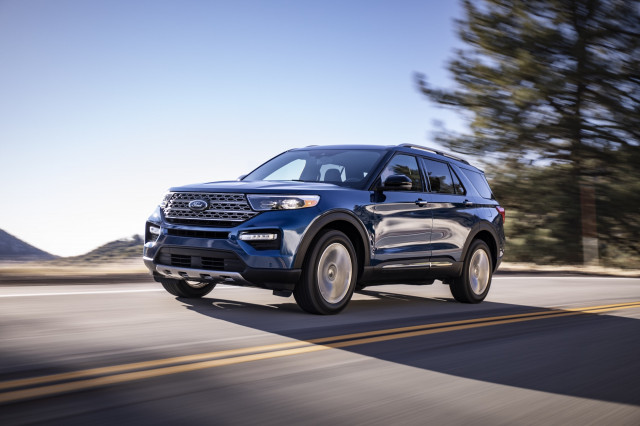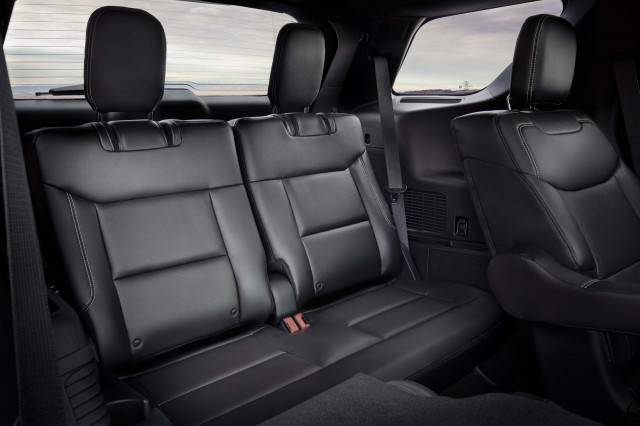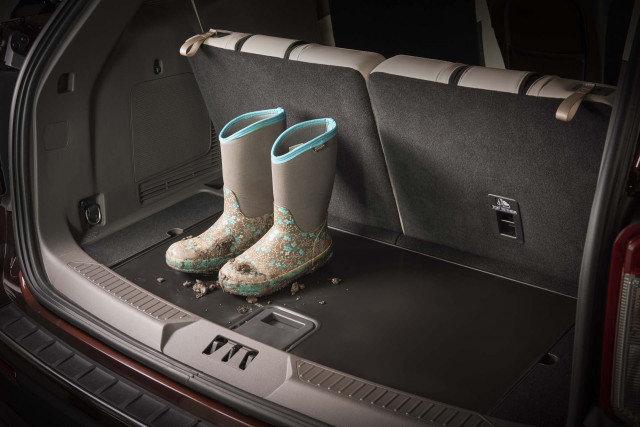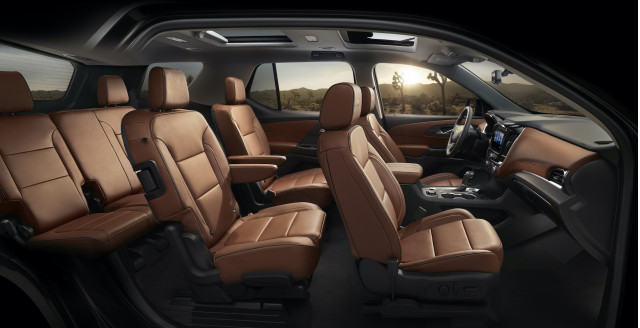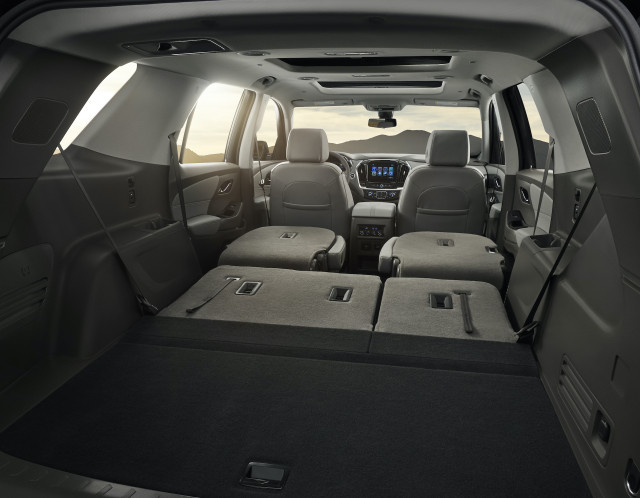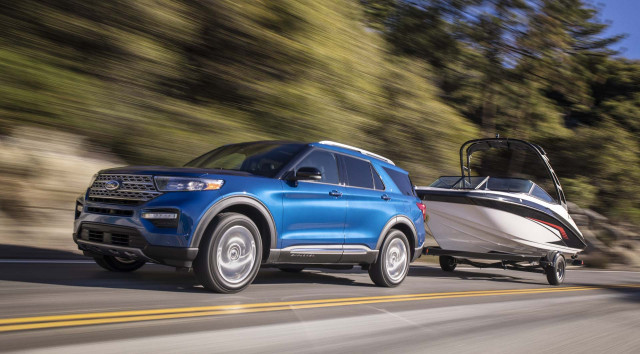The 2020 Ford Explorer and 2020 Chevrolet Traverse are modern-day Lewises and Clarks of the open road, transporting families to every corner of the U.S. with long hours on pencil-straight interstates.
Although the Explorer and Traverse aren’t plugging up the banks of the Mississippi or clambering across the Louisiana Purchase the hard way, they’re sturdy domestic crossover SUVs that seat up to seven or eight in relative comfort with room for gear in the back.
Our TCC Rating prefers the Explorer over the Traverse, 6.8 to 6.0 due mostly to the Explorer’s relative new-ness. Ford overhauled the Explorer for 2020 and it shows: big touchscreens, USB ports for many devices, and a bigger body. The Traverse is hardly small, but an updated version is in the books—for next year. A deeper dive reveals how we arrived at our numbers, but both rate above-average for new cars in 2020.
MORE: Read our 2020 Ford Explorer and 2020 Chevrolet Traverse full reviews
2020 Ford Explorer ST
2020 Ford Explorer
2020 Chevrolet Traverse
2020 Chevrolet Traverse
The Traverse and Explorer are similar in size and scope. Both crossovers measure about 200 inches from bumper to bumper with about 10 feet between the wheels. The Traverse seats up to eight in its three rows, while the Explorer promises seats for up to seven in only base trim. In reality, both crossovers will seat up to six adults or two adults and up to five children.
2020 Chevrolet Traverse
The Traverse is slightly bigger inside—it’s about six inches longer than the Explorer at 204 inches from bumper to bumper—for passengers and cargo. The difference is mostly in the wayback, too: The Traverse offers about 33 inches of third row leg room and up to 23.0 cubic feet of cargo room with the third row in place. The Explorer’s third-row leg room measures about 32 inches and with the third row in place, the Explorer holds about 18 cubic feet of cargo.
Getting into the third row is also more of a chore in the Explorer than the Traverse. The combination of a low seating position, little leg room (even with the second row slid forward), and limber bodies needed to get back there means the third row is best for children in the Explorer. The Traverse is a little better—we’ve stashed misbehaving colleagues back there en route to dinners before—and we prefer it for now.
In nearly every other respect, the Explorer is better equipped than the Traverse. We favor the Explorer’s handsome looks and a car-like interior that’s nicer compared to its predecessor. Next year’s Traverse is more promising in the looks department, but it won’t arrive until much later in 2020.
2020 Ford Explorer hybrid
The Explorer also has a more advanced powertrain menu than the Traverse. Chevy relies solely on a 3.6-liter V-6 that makes 310 horsepower to drive a 9-speed automatic transmission that powers the front or all four wheels. It’s a smooth powertrain without much fuss, and it returns about 20 mpg combined, according to the EPA.
The Explorer’s most common engine is a 2.3-liter turbo-4 that makes 300 hp and sends power to the rear or all four wheels via a 10-speed automatic transmission. The EPA rates it up to 24 mpg combined, or 23 mpg combined with all-wheel drive. A spend-up turbo V-6 on Explorer Platinum or Explorer ST makes 365 or 400 hp, respectively, and shifts power to all four wheels via the same 10-speed automatic. Only in highway passes or climbing up mountain grades did the turbo V-6 come in handy; the turbo-4 is fine around town. Ford offers a hybrid Explorer, too. It pairs a 3.3-liter V-6 with hybrid batteries and an electric motor to return up to 25 mpg combined, according to the EPA. Although it’s the most fuel-efficient, we found the hybrid version to be the least drivable; it shudders at speeds between 15 and 40 mph.
2020 Ford Explorer
The Explorer has better tech inside, too. In addition to an available 10.0-inch touchscreen, the Explorer offers a standard 8.0-inch touchscreen with smartphone connectivity, an in-car wi-fi hotspot for up to 10 devices, four USB ports for the first two rows of seats, and active safety features such as automatic emergency braking. Heated and cooled seats, leather upholstery, upgraded audio, and the like are all available for more money.
The Traverse skips automatic emergency braking on base models (it’s optional on higher trims, too) and makes standard a 7.0-inch touchscreen with smartphone compatibility. An 8.0-inch version is available on some trims, as is more USB ports and upgraded upholstery and audio. Chevy includes in-car wi-fi on all models that we’d happily trade for automatic braking.
The Traverse costs about $31,000 in base configuration compared to the Explorer’s $34,000 base price. We’d step up to the Explorer XLT or Traverse LT with all-wheel drive that costs about $40,000 for both models.
Our rating favors the Explorer thanks to its better tech, looks, and powertrain compared to the Traverse—so long as a third row isn’t a must-have. If it is, the Traverse may be a better pick.
Summary
Styling
Performance
Comfort & Quality
Safety
Features
Fuel Economy
MSRP
Invoice
Fuel Economy – Combined City and Highway
Engine
Drivetrain
Source: Read Full Article

